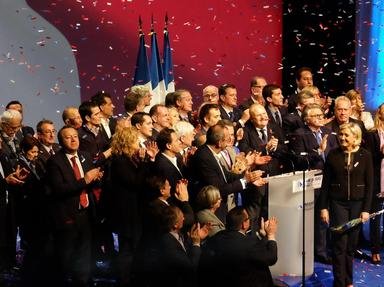Quiz Answer Key and Fun Facts
1. Which party is the granddaddy of all third parties, having fielded a candidate for President in every election since its formation in 1869?
2. Which party held the first national political convention?
3. Besides Teddy Roosevelt and Millard Fillmore (who as ex-Presidents can be considered special cases), which third party candidate polled the highest percentage of the national popular vote?
4. Which party finished fourth in both 1992 and 1996 after the Republican, Democratic, and Ross Perot's Independent or Reform party?
5. Eugene V. Debs ran for President 5 times as the candidate of which party?
6. In 1893, Debs founded the nation's largest labor union, by organizing the workers in which industry?
7. Where was Debs when he ran for President for the last time in 1920?
8. Who won 5 States as the Populist Party candidate in 1892?
9. Who ran as the Free Soil candidate in 1848?
10. There have been 45 elections since the popular vote was first tabulated in 1824. In how many of those 45 elections did the presence of third-party candidates prevent the top candidate from receiving at least 50 percent of the vote?
11. Teddy Roosevelt's Progressive Party was known by what nickname during the 1912 campaign?
12. Which State did Robert M. Lafollette win when he ran as the Progressive Party candidate in 1924?
13. How many States did Strom Thurmond win as the States Rights Party candidate in 1948?
14. How many States did George Wallace win in 1968?
15. Ralph Nader was the candidate in 2000 of which party?
Source: Author
chessart
This quiz was reviewed by FunTrivia editor
thejazzkickazz before going online.
Any errors found in FunTrivia content are routinely corrected through our feedback system.

